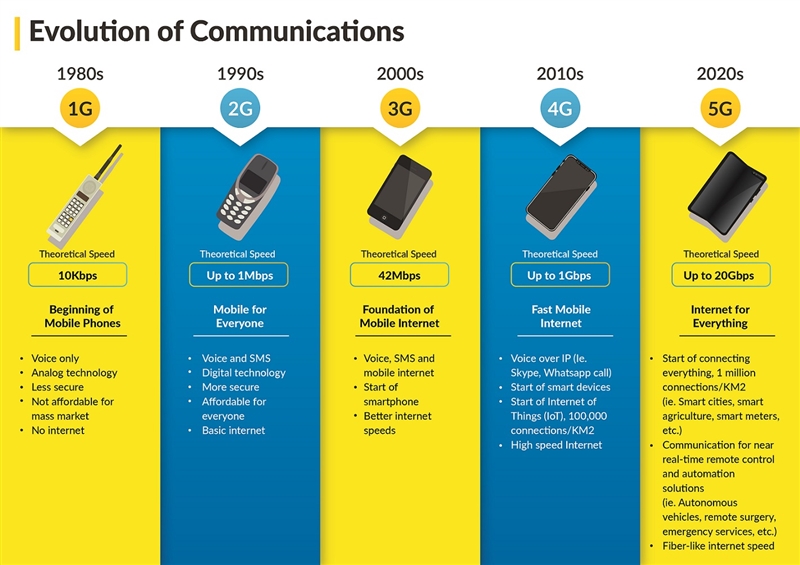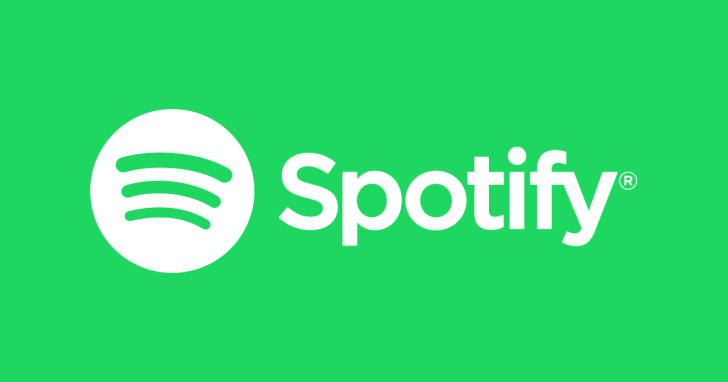- What is 5G?
5G is the next generation of mobile communications. It is preceded by 4G (LTE-A, WiMax), 3G (UMTS, LTE) and 2G (GSM) generations. 5G is designed for ultra-fast speeds, low latency (latency = how quickly a network responds to an instruction), excellent reliability and increased security.
5G is expected to be a key enabler for innovation in many areas including medicine, manufacturing, transportation, agriculture and more. In the coming years, 5G will provide faster speeds for consumers and will digitise services like health care, transportation, local and national public services and more.

- How is 5G different from 4G (and previous generations)?
Each generation is faster, more secure, and more reliable than the previous generation, making way for new technologies and innovation.
5G aims to be more than that. Speed and lower latency aside, it increases the number of devices that can be efficiently managed on a wireless network simultaneously, creating new possibilities for machine-to-machine communications, internet of things technologies, and many more.
Over the next few years, we will still need to utilise and develop 4G technologies, and make it more available across Malaysia. 4G LTE and LTE-A network technology is already effectively running many IoT services and other industrial scale connectivity in places. These services will continue to operate and expand on existing platforms for the foreseeable future.
- What can 5G do?
Beyond high speeds and low latency, a key feature of 5G is that the same physical network can support numerous use cases with different requirements through network slicing. ‘Network slicing’ is a technology that allows operators to virtually dedicate network resources into ‘slices’ that can be reserved for selected services such as mission critical communication.
As 5G is more comprehensively rolled out, new society-wide services are to be expected. It could enable smart cities, digital health services, advanced emergency services, connected autonomous vehicles and many others. Primary use cases include:
- Enhanced Mobile Broadband (eMBB): Faster mobile internet experience for more seamless, enabling applications such as Virtual Reality (VR), Augmented Reality (AR) and 360-degree video streaming.
- Massive Internet of Things (mIoT): Millions of things can be connected paving the way for smart cities, smart energy grids, metering and monitoring, tracking, and more.
- Ultra-Reliable Low Latency Communication (URLLC): Support businesses or mission critical communications scenarios that require quick response time or precision such as emergency situations, autonomous vehicles, remote surgery and more.
- When will 5G be available?
5G is estimated to rollout from 2021/2022 onwards. Rollout will be gradual, and pockets of 5G or 5G ‘islands’ will emerge beginning as pilots to test various functionalities and uses cases.
- What are the technological fundamentals for 5G to be fully implemented?
In order for 5G to be deployed, the government and the industry have to establish if these key factors are ready: infrastructure, policies and regulations, spectrum, cross-sector innovation and relevant use cases, and wide-availability of devices.
- What sort of spectrum is needed to support 5G deployment?
5G will utilise spectrum across a broad range of bands from sub 1 GHz up to 100 GHz. The pioneer spectrum bands include 3.5 GHz, 700 MHz and 26/28 GHz frequencies.
- Will I need to change my devices to be 5G compatible?
As 5G becomes available, consumers will have to use 5G compatible devices to enjoy 5G. However, we have only just begun to take steps towards 5G deployment, and the majority of devices in the market do not yet support 5G.









